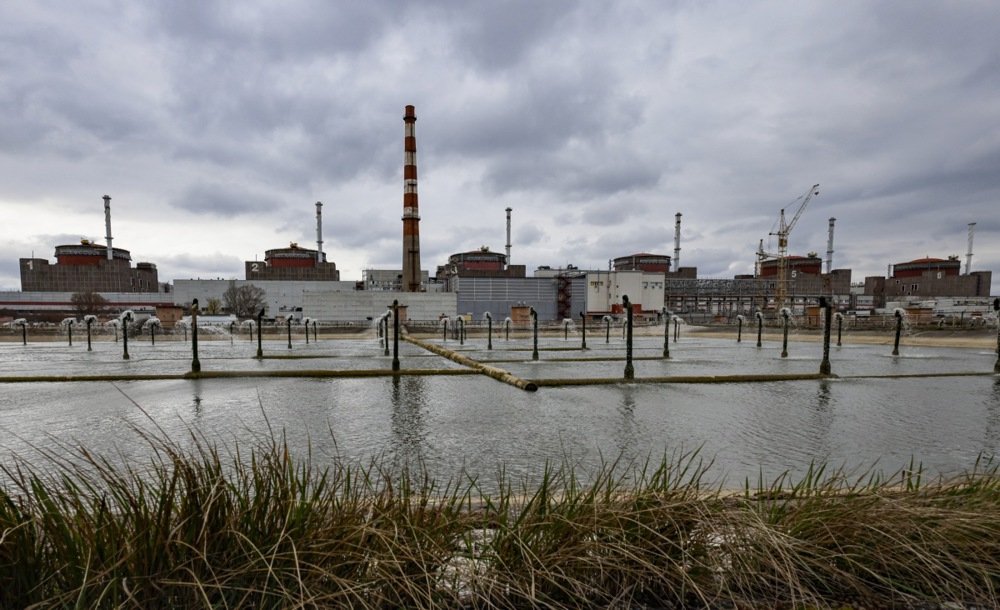



Despite Vladimir Putin appearing to skip what could be the first round of direct Russia-Ukraine talks in three years, delegations from Moscow and Kyiv may still meet in Istanbul on Thursday, with territory — and who controls it — bound to be high on their agenda.
Putin proposed direct talks between Moscow and Kyiv in an unexpected overnight address on Sunday amid increasing pressure from the US and EU to agree to a 30-day ceasefire in Ukraine, but the Kremlin remained non-committal on his personal attendance after Zelensky said he “expected” Putin to join him in Türkiye.
The Kremlin finally announced late on Wednesday that the Russian delegation would be led by presidential aide and former culture minister Vladimir Medinsky.
Zelensky, meanwhile, said on Wednesday that he would be “waiting” in the capital Ankara after meeting with Turkish President Recep Tayyip Erdoğan on Thursday, and would decide “which steps Ukraine should take” based on who Russia sent to Istanbul.
Russia has said it wants to focus on the Istanbul communiqué of March 2022 and a subsequent draft agreement that was negotiated, but never adopted, by the two sides in April 2022.
These 2022 negotiations focused on Ukraine becoming a permanently neutral state and on which nations would provide security guarantees for any deal. They also relegated discussions over Crimea to separate negotiations with a 10-to-15-year timeframe.
Russia uses the phrase “the current situation on the ground” as thinly disguised code for territorial questions that have become more contentious over the past three years. This relates to Russian gains on the battlefield and the illegal annexation of four Ukrainian regions in September 2022, in addition to Crimea, which Russia also illegally annexed in 2014.
Russia’s position, as articulated recently by the country’s foreign minister, Sergey Lavrov, is that “the international recognition of Crimea, Sevastopol, the DPR, the LPR, the Kherson and Zaporizhzhia regions as part of Russia is … imperative”.
This is clearly a non-starter for Ukraine, as repeatedly stated by Zelensky. There could, however, be some flexibility on accepting that some parts of sovereign Ukrainian territory are under temporary Russian control. This has been suggested by both Trump’s Ukraine envoy, Keith Kellogg, and Kyiv’s mayor, Vitali Klitschko.
The areas with the greatest strategic value include Crimea and the territories on the shores of the Azov Sea.
The territories that Russia currently occupies and claims in Ukraine have varying strategic, economic and symbolic value for Moscow and Kyiv. The areas with the greatest strategic value include Crimea and the territories on the shores of the Azov Sea, which provide Russia with a land corridor to Crimea.
The international recognition of Crimea as part of Russia, as apparently suggested under the terms of an agreement hashed out by Putin and Trump’s envoy Steve Witkoff, could expand the areas of the Black Sea that Russia can claim to legally control.
This could then be used by the Kremlin as a launch pad for renewed attacks on Ukraine and to threaten NATO’s eastern maritime flank in Romania and Bulgaria. Any permanent recognition of Russia’s control of these territories is, therefore, unacceptable to Ukraine and its European partners.
Donetsk and Luhansk are of lower strategic value, compared with Crimea and the Kherson and Zaporizhzhia regions. However, they do have economic value because of the substantial resources located there. These include some of the mineral and other resources that were the subject of a separate deal which the US and Ukraine concluded on 30 April.

A general view of the Zaporizhzhia Nuclear Power Plant in Enerhodar, southeastern Ukraine, 29 March 2023. Photo: EPA-EFE/SERGEI ILNITSKY
They also include Europe’s largest nuclear power plant in Zaporizhzhia and a large labour force among their estimated population of between 4.5 million to 5.5 million people who will be critical to Ukraine’s post-war reconstruction.
Beyond the strategic and economic value of the illegally occupied territories, the symbolism that both sides attach to their control is the most significant obstacle to any deal, given how irreconcilable Moscow’s and Kyiv’s positions are. For both sides, control of these territories, or loss thereof, is what defines victory or defeat in the war.
Putin may be able to claim that some territorial gains in Ukraine since the start of the full-scale invasion in February 2022 are a victory for Russia. But even for him any compromise that would see Russia give up territory that it has conquered — often at exceptionally high cost — would be a risky gamble for the stability of his regime.
Anything less than the complete restoration of the country’s territorial integrity in its 1991 borders would imply recognition of defeat in the war for Ukraine. This would critically threaten the stability of the Zelensky government, whose political programme rests on exactly the premise of a return to the 1991 borders.
As a result, the Ukrainian leadership has become hostage to its own information strategy, which has placed the “return of all territories” at the top of the criteria for victory. This is a goal widely shared among Ukrainians, according to a poll conducted by the Razumkov Centre in March 2025. But it will be hard to achieve.
Apart from the potential domestic fall-out from any territorial compromises that Ukraine may be forced to make, there is another reason why the territorial question has become so intractable.
Beyond any strategic, economic and symbolic value that the occupied Ukrainian territories hold from the Kremlin’s perspective, control over territory has always been an instrument for Russia to pursue its broader geopolitical agenda of exercising influence over its neighbours — from Moldova, to Georgia, Armenia and Ukraine.
There is no guarantee that any territorial concession from Kyiv now would put a permanent end to Moscow’s territorial expansionism.
It is also important to remember that Russia’s territorial claims in Ukraine have gradually expanded since 2014. Until September 2022, when it annexed the other four regions, Russia laid claim to Crimea only.
There is no guarantee that any territorial concession from Kyiv now would put a permanent end to Moscow’s territorial expansionism. It is therefore worrying that Trump envoy Witkoff, in an interview with the Breitbart news website, reiterated the US view that the two sides need to find compromises on who controls which territories.
Russia’s aggression against Ukraine was not a war over territory as such, but was part of Moscow’s agenda to restore the sphere of influence that it lost at the end of the Cold War. This agenda is far from finished.
The strategy of both Moscow and Washington to focus on territorial consequences may lead to a ceasefire. But it will not address the fundamental issue of how to deal with a vengeful and revisionist autocracy on Europe’s doorsteps.
Stefan Wolff is a Professor of International Security at the University of Birmingham and Tetyana Malyarenko is a Professor of International Relations at the Odesa Law Academy.
This article was first published in The Conversation. Views expressed in opinion pieces do not necessarily reflect the position of Novaya Gazeta Europe.
The Russian government has banned independent media. We were forced to leave our country in order to keep doing our job, telling our readers about what is going on Russia, Ukraine and Europe.
We will continue fighting against warfare and dictatorship. We believe that freedom of speech is the most efficient antidote against tyranny. Support us financially to help us fight for peace and freedom.
By clicking the Support button, you agree to the processing of your personal data.
To cancel a regular donation, please write to [email protected]
VPNovaya
Help Russians and Belarusians Access the Truth
